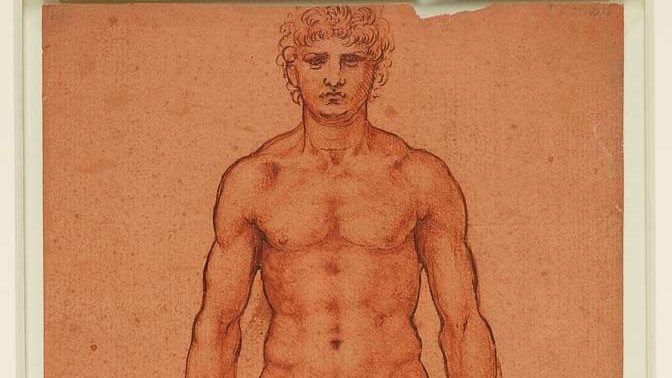When we think of Leonardo da Vinci, the first things that come to mind are usually the Mona Lisa, The Last Supper, or his myriad inventions and anatomical sketches. But today, we’re peeling back the layers of a straight-washed Renaissance to reveal a more intimate portrait of the artist and his lifelong companion.
In his lifetime, da Vinci was synonymous with artistic mastery, intellectual prowess, and a fashion sense that was the envy of Milan. With his striking looks, muscular build, and the kind of charm that could make a stoic Medici swoon, Leonardo was the ultimate Renaissance icon.
And then comes the “Little Devil” himself, Gian Giacomo Caprotti da Oreno, affectionately (or exasperatedly) known as Salai. When a curly-haired, angelic-faced boy entered Leonardo’s life in 1490, he brought with him a whirlwind of chaos and charm. Leonardo’s diary entries were soon filled with tales of Salai’s sticky fingers and impish antics. Despite it all, Leonardo couldn’t resist the boy’s allure, endearingly nicknaming him Salai, a nod to his devilish behaviour, translating to ‘little devil’ in Italian.
Their relationship was as complex as one of Leonardo’s own creations. Salai wasn’t just an assistant or a pupil; he was a companion, a muse, and, quite likely, a lover in their later years. Leonardo’s sketches overflow with Salai’s image: a beautiful youth with cascading curls, often depicted alongside the older, more rugged figures that may have represented Leonardo himself. The contrast of beauty and age, innocence and experience, was a motif that fascinated Leonardo throughout his life.
At dinner parties, Leonardo would be the dashing and impeccably dressed maestro, while Salai, the boyish rogue with a penchant for breaking things and stealing silver styluses. They were the Renaissance’s answer to eccentric bohemian royalty, turning heads and causing whispers wherever they went. Even when Salai’s pranks reached new heights of audacity, Leonardo’s affection never wavered. Records show an amusing blend of annoyance and indulgence, a testament to their unique bond.
But what about their love life? Well, the evidence is tantalisingly suggestive. Lomazzo’s unpublished 1560 “Book of Dreams” immerses us in a playful dialogue where Leonardo unabashedly admits to engaging in what he calls “that backside game that Florentines love so much” with Salai. While Lomazzo’s account is a product of creativity, its credibility is bolstered by his ties to one of Leonardo’s students. In a world where such relationships were often hidden or condemned, Leonardo’s unapologetic pride is both surprising and endearing. “Among men of worth, there is scarcely greater cause for pride,” he declares, championing a love that transcended societal norms.
Leonardo’s devotion to Salai transcended mere affection. He indulged his young companion’s love for finery, recording the costs of Salai’s colourful and often extravagant attire in his notebooks. Pink was a particular favourite, reflecting both Salai’s flamboyant personality and Leonardo’s own penchant for vivid hues. Theirs was a relationship painted in bold strokes and vibrant colours, as dazzling as Leonardo’s art and as enduring as his legacy.
Sure, Salai aged, but in Leonardo’s eyes and sketches, he remained eternally youthful, forever the beautiful boy who had captured his heart. Even in the final years of Leonardo’s life, his drawings of Salai exuded tenderness and longing, a poignant reminder of their enduring connection. The artist, grappling with the passage of time, found solace in the timeless beauty of his beloved muse.
In recounting the tale of Leonardo and Salai, it’s imperative to acknowledge the tendency of historians to straight-wash the narratives of historical figures. For centuries, societal norms and biases have obscured the true nature of relationships like theirs, shrouding them in historical obscurity. By delving into the intricacies of their companionship, we not only shed light on the depth of their connection but also challenge the heteronormative lens through which history has often been viewed. It reminds us of the importance of revisiting the lives of historical figures with a critical eye, allowing us to uncover the complexities of their identities and relationships and honour their stories in all their full, unapologetic truth.
So, next time you admire the Mona Lisa’s enigmatic smile or marvel at The Last Supper’s intricate details, remember the man behind these masterpieces. Leonardo da Vinci was not just a solitary genius but also a lover and a dreamer, forever entwined with his “Little Devil.” Their story adds a rich, human layer to the legend of Leonardo, reminding us that even the greatest minds have room for love, laughter—and a touch of mischief.


